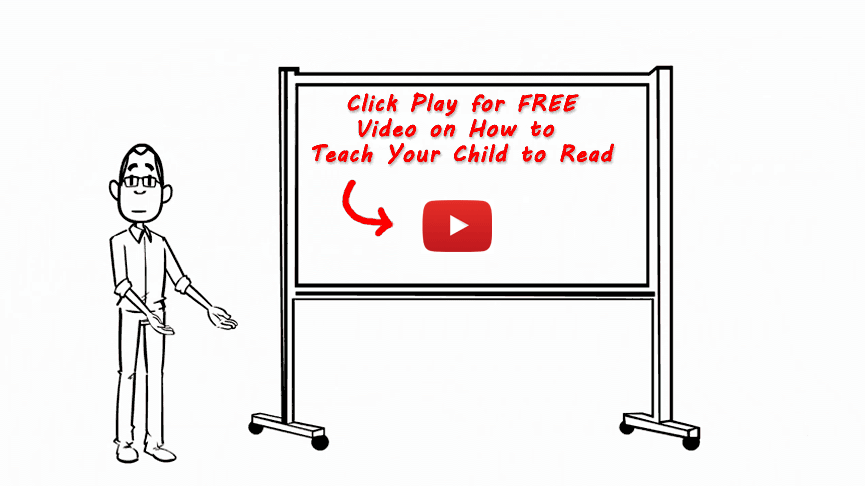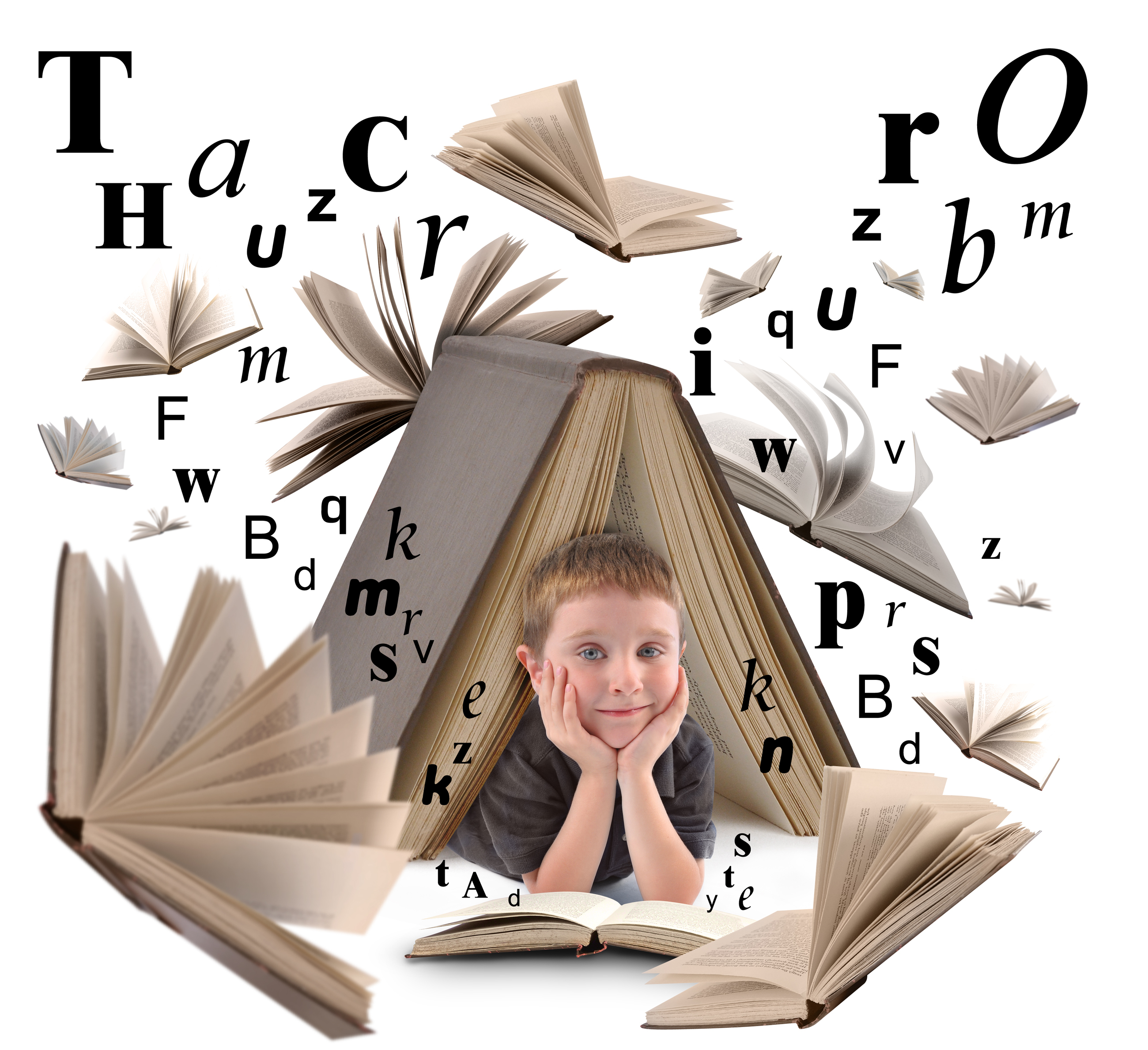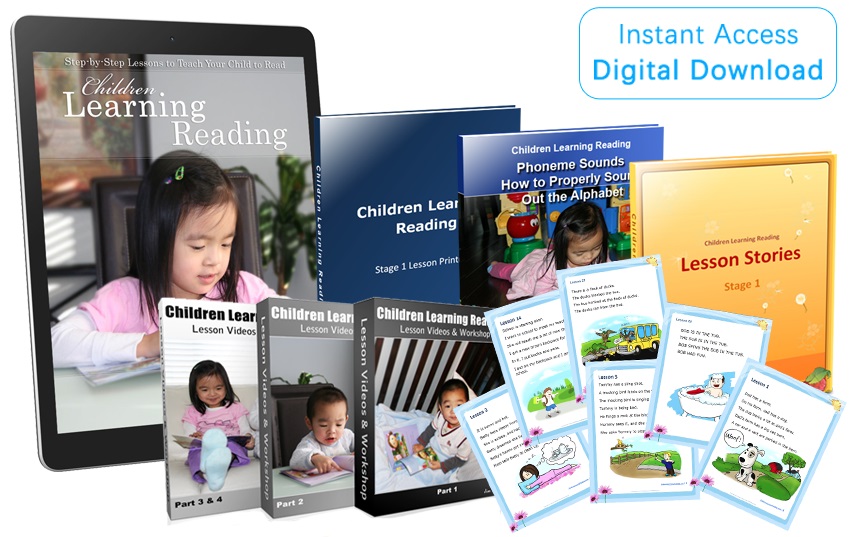The Simplest And Most Effective Way To Teach Your Child How To Read
Children And Reading
Watching your child learning how to read and developing into a reader from a non reader is one of the most joyful experiences that a parent can have. You do not want your child to be among those that cannot read properly as they grow up, and it is very important to teach them to read the right way for the future.
Many children that cannot read proficiently will use their intelligence to plug gaps throughout the education process, but this will become increasingly more difficult for them to do as the reading matter becomes more complex, and they will be unable to stay with the pack.
A lot of research has been conducted by scientists to understand how the brain is used when it comes to reading. Unless a child has neurological problems or development disorders they should be able to read proficiently if they receive the correct instruction.
In fact, the area of reading is the most researched topic in education, and intense studies have been undertaken to find the best way to teach your child to read. The National Institute of Child Health and Human Development as well as the National Academy of Sciences have both been involved in research.
Brain modelling using MRI (magnetic resonance imaging) was used to test the different reading approaches and determine which were the most effective. This research showed that children that were sensitive to the sounds of words would be more likely to develop into proficient readers, where those that did not have this sensitivity were more likely to experience difficulty with reading.
What this means is that both good readers and poor readers can understand the word “cat” but the poor reader is unlikely to be able to distinguish the three sounds that are present in the word, or to understand that if the “t” is replaced with an “r” it will change the word from “cat” to “car”.
Hearing the individual sounds or phonemes is critical. Without this essential grounding a child will find it difficult to progress with their reading. Science has proved that this is not linked to intelligence and IQ.
If your child learns all of these phoneme sounds before they attend school, they will be able to perform all the reading exercises that they are confronted with very easily. They will have developed good phonemic awareness if they are taught at home properly.
So when you want to teach your young kid to read it is just a simple process of developing their phonemic awareness accompanied by around 100 hours of systematic instruction in phonics to lay the foundation for proficient reading skills in the future.
Being able to read and write can change the landscape of your child’s future. These basic yet vital skills are deprived to millions of kids worldwide, and the detrimental effects of these can be seen with many struggling to find a good job, or get into a good college. All parents want the best for their kids, and are incessantly trying to find the most efficient way to develop reading skills in their children. But with various types of educational products available, each promising the world and more, it can be hard to find a method that actually works.
There was a time when a video of a 1 year old reading fluently would go viral on youtube.com, but now parents understand that it is very possible for their own toddlers to achieve such mastery as well. No child is too young to read; in fact, developing these skills at a young age will stimulate their cognitive abilities, and vest them with many other abilities to become competent students. It is not difficult teaching your child to read.
What if your child hasn’t started school yet?
Learning how to read begins at home, and you can teach your baby to read just after they turn into 2 and up and can read more clearly. Research shows that, the earlier you can get your child to start reading, the better they will progress in school and beyond. The truth is though that you don’t need any really expensive reading programs to teach your kids how to develop these building blocks of education
Believe it or not, emerging literacy skills actually start right when the baby is born. It is a long process, where they slowly learn to understand and then correctly use language to communicate. From the moment you start speaking to the baby, and begin any form of verbal interaction, it also starts the development of language skills in them.
Within the first 3 years, children are able to learn new words like a sponge. In fact, they can even speak and read full sentences, while using the correct tenses.
You can really help to teach your baby or toddler to read by reading to them regularly. It is important that your child is exposed to reading, as this will make learning a lot easier. Your toddler will become interested in reading if you read to them often.
Start reading to your child as early as you can, and continue to do this through their early years at school. You should read books to them that are at the level that they should be able to read. Be prepared to read a number of small books each day.
Your child can pickup comprehension skills even before they learn how to read, and to encourage this further it is a good idea to ask them questions about the story that you are reading to them. If they are toddlers keep this simple such as asking what the boy or girl’s name is in the story.
Encourage your child and set a good example by reading yourself, and showing them that it is interesting and enjoyable. You need to do this when your child is around, and you can use a book, a newspaper, a magazine or anything that contains the written word.
Take this a step further by including your child in your reading. If the material is acceptable for children, explain what you are reading, and once they have developed some foundational reading skills you can show them the actual words on the page.
Before your child learns the alphabet and the essential phonic sounds, you can show them that the lines on the page you are reading directly correlate to the words there. Read each word out loud and point to the words as you read them. You will be helping your child to understand that words are used in lines on a page and that words have different lengths.
According to NAEP (the National Assessment of Educational Progress), 38% of 4th graders are unable to read at the basic required reading level. It is a frightening statistic, and sadly it is true. Not being able to read can actually negatively impact all the other areas of their lives. You do not have to wait for the child to start school to teach them how to read.
In fact, you can slowly introduce them to the alphabet, then the sounds, which will help them develop phonemic awareness. You will find them effortlessly pronouncing word after word, finishing sentences, and soon paragraphs.
How To Teach Children To Read Simply And Effectively With A Good Reading Program
The best way to teach reading is by using a good teaching program. This will help your child to understand that there are 44 different speech sounds from the 26 letters of the English alphabet. They will also learn that some combinations of letters make special sounds such as “th” and “sm”.
The best reading programs will be simple and efficient and will teach at a steady pace, so that your child can grasp the sounds that single letters and combinations make. They will provide real life examples to reinforce this learning.
They will also assist in phonemic awareness development by breaking words down into the smallest of parts. Your child will learn to “sound out” each of the phonemes and will soon become proficient at doing this.
When you are using a quality reading program for teaching toddlers to read, you need to be patient and teach them every day in short bursts. Do not expect your child to be an expert in grammar straight away. They will develop these skills in time.
If your child has just learned to speak or is older it doesn’t matter, as the best reading programs will be able to teach them how to read. Even adults that are struggling to read can be taught to be proficient readers with these programs.
So if you want to know how to teach a 2 year old, a 3 year old, a 4 year old, a 5 year old, a 6 year old or even an adult to read then the answer lies in a high quality teaching program.
If taught with the right reading program, you can get a 2 year old toddler to read proficiently. Click here to see how Jim Yang, the creator of the highly sought after reading program, Children Learning Reading, taught his toddlers how to read.
Phonics vs. whole word: which is the best method to teach your children to read?
Many language programs promote a whole word approach where the child is taught whole words with the use of flash cards. Rather than using the techniques of decoding and blending, they are made to memorize the word by learning the shape of it. Although this helps them learn words quickly, the problem is that there isn’t any kind of strategy being taught with this method. So, the child is unable to read unfamiliar words. It is not a good way to teach a toddler to read.
Avoid the use of flash cards as your child will not develop the reading skills that they need. A lot of companies promote this as a good way for babies and toddlers to learn to read but all you will be doing here is teaching your child how to associate the shape of a word with a correlated picture.
This is where using phonics helps. With the method of phonics, the child learns how to break up the words into individual sounds (phonemes), which they then join together to form words. This method enforces the use of letter-sound relationships, and provides the child with a formula that they can use on any complex or unfamiliar word. As you can see, with this approach, the child not only learns to read efficiently, but they also learn to spell words correctly.
Developing phonemic awareness is vital. Using this, the child will be able to look at the words at the level of phonemes, recognize them, then manipulate them, to then correctly sound out the whole word. This is the best way of teaching a child to read.
The whole word approach simply expects the child to know how to read by relying on their memory. Phonics, instead, gives them a strategy whereby they decode and blend any word successfully. It is a sequential process which starts with teaching them the alphabet, then letter sounds. After that, they are trained on the skills of decoding and combining words. It is an intuitive and logical approach to learning how to read and spell correctly.
Check out the Children Learning Reading Program to learn more about this research backed approach to reading. The program can be used to teach children of any age how to read as long as they can talk. It can teach adults too. Click the button below:







